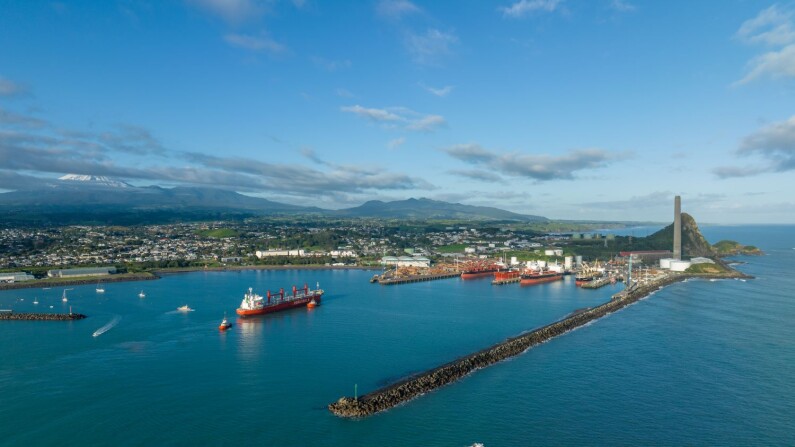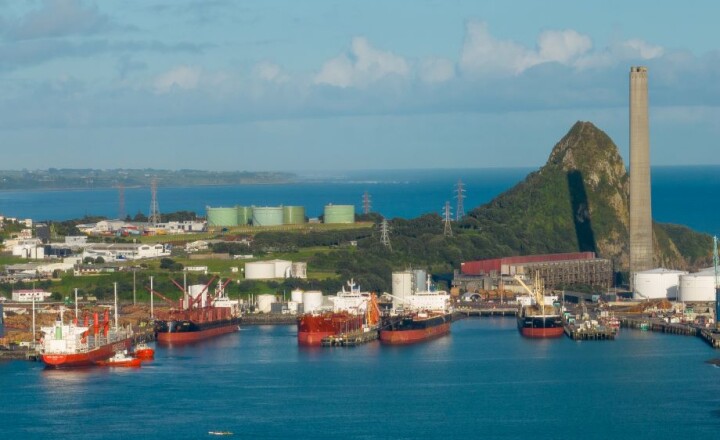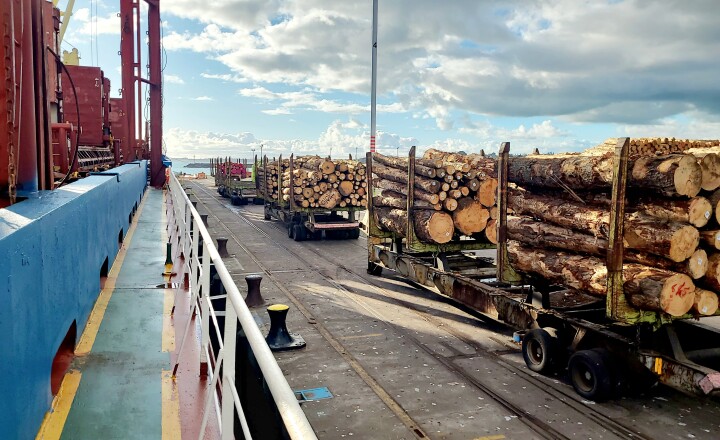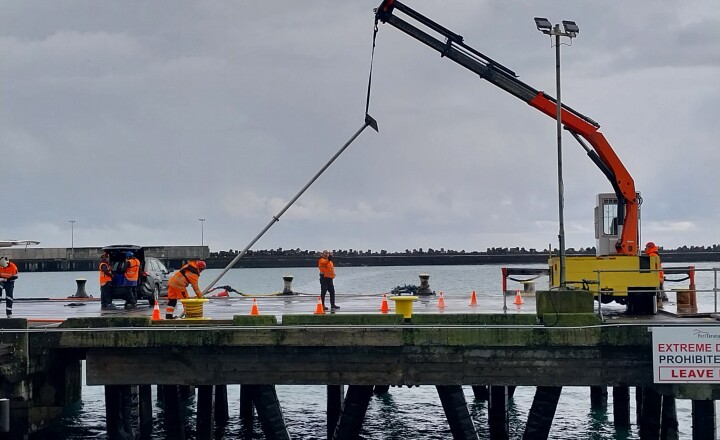
Challenging economic and market conditions and production difficulties in the energy sector have combined to impact Port Taranaki’s financial result for the 2023-24 year.
For the year ended 30 June 2024, Port Taranaki recorded net profit after tax (NPAT) of $6.88 million, down from the previous year’s all-time record of $13.87 million.
“The result is lower than we budgeted, but it is a reflection of difficult production and trading conditions for many of our customers, particularly in the energy sector, and the challenging economic conditions that have seen our costs increase,” Port Taranaki chief executive Simon Craddock said.
“High interest rates and inflation, increased insurance costs, reduced gas production, lower log export volumes, and increased operational costs, have all combined to impact our result.”
A tax law change, which saw the Government remove tax deductions of industrial and commercial buildings with original estimated lives of 50 years or more, also impacted Port Taranaki’s full-year result.
“Without that change, NPAT would have been $8.59 million, while it’s also important to note that the 2022-23 full year result was boosted by some extraordinary non-trade revenue, including an insurance payout related to Cyclone Dovi,” Mr Craddock said.
Full-year Port Taranaki revenue was $54.01 million – $3.42 million down on $57.43 million in full-year 2022-23.
Operating expenses were up $2.44 million to $32.41 million, driven primarily by increased personnel costs and higher insurance costs. This was offset slightly by repairs and maintenance costs dropping from $4.21 million to $4.13 million.
Dividend to Taranaki Regional Council
The Port Taranaki Board of Directors has declared a final dividend for the year of $3.0 million. Dividends paid to shareholder the Taranaki Regional Council (TRC) were $8 million for the 2023-24 financial year. These dividends help ease the rates burden on regional ratepayers.
“Port Taranaki is a key community and regional asset that’s here in perpetuity. We’re focused on ensuring the port is a multipurpose asset that is adaptable and resilient to present and future trading conditions, and continues to add value to the region – providing customers with the services and facilities they need, attracting new business and industry, and supporting the region via TRC dividends and community sponsorships,” Mr Craddock said.
Trade numbers
Total trade volume for the year was 3.91 million tonnes, which was 788,000 tonnes, or 16.6%, down on 4.69 million tonnes the previous year.
Bulk liquids trade was down 659,000 tonnes, or 23.4%, to 2.16 million tonnes, with methanol, the largest trade through Port Taranaki, dropping 429,000 tonnes (25.1%), from 1.71 million tonnes to 1.28 million tonnes. It was the lowest volume of methanol through the port since 2012. Crude oils trade at 655,000 tonnes was 18.0% down on the previous year.
“The energy sector has traditionally been our largest contributor to overall trade, but the decline in gas and condensate reserves and production has significantly impacted bulk liquids trade in the past year,” Mr Craddock said.
“Energy security is a real issue, and the economic damage from high energy prices is an increasing concern. In recent months, it is a problem that has been put on industry, the largest users of gas and electricity, to alleviate.
“Methanex NZ, our largest customer, reduced production earlier this year, and has now ceased methanol production for a period to provide gas to electricity generators.
“We recognise that this decision has been borne out of necessity, through a combination of a dry year for electricity generation and the decline in gas reserves, while significant development expenditure on existing oil and gas fields has not produced the expected results.
“However, New Zealand’s international competitiveness is important, as is maintaining export earnings and favourable balance of payments. Therefore, we look forward to a solution being found and implemented that enables some of New Zealand’s key export earners to return to previous higher levels of production.”
Dry bulk trade for the 2023-24 year was up 43,000 tonnes (6.0%) to 754,000 tonnes, boosted by a 96,000-tonne increase in animal feed trade. However, fertiliser trade was down 45,000 tonnes to 95,000 tonnes.
At 945,000 Japanese Agricultural Standard (JAS) tonnes, export log trade dropped below 1.00 million JAS for the first time in four years.
“Slower economic growth in China, which saw weakened log prices, impacted the trade and resulted in a 140,000 JAS (12.9%) reduction in logs through the port,” Mr Craddock said.
“We were cushioned somewhat by the arrival at port of windthrown wood from the Taupō-Turangi area. This was wood that was brought down prematurely by Cyclone Gabrielle and exported through a number of North Island ports, including Port Taranaki.”
The decline in total trade, in particular bulk liquids, had a subsequent flow-on effect on vessel visits, with 252 recorded for the 2023-24 year – 41 fewer than the previous year.
Outlook for 2024-25
Port Taranaki chair Jeff Kendrew said the outlook for the 2024-25 year was for more supply difficulties in the energy sector, resulting in lower bulk liquids and a fall in overall trade to approximately 3.2 million tonnes.
“This will, in the upcoming year, see an increased focus on delivering opportunities to diversify revenues, expanding the port’s service offering, reducing costs, making the port’s asset management plan more efficient, planning port infrastructure for multi-use needs and, therefore, positioning the company for the future,” he said.
“While the near term is challenging, there is cause for optimism, with opportunities for new trade and support work in the future.”
Port Taranaki 2023-24 highlights
- Secured offtake pilotage and support vessel services for OMV New Zealand during petrochemical offtakes at the Maari oil field.
- Sold long-time tug Rupe and took management of a tug that has greater bollard pull and wider capabilities to improve the safety and resilience of marine operations.
- Improved the port’s health and safety performance and implemented a three-year Health and Safety Improvement Plan.
- Continued work on developing further trade and services opportunities, such as offshore wind production, LNG imports, offshore support services, and other cargoes.
- Carried out a $1.5 million project to reinforce and strengthen the Newton King Tanker Terminal seawall against sea and swell, and large weather events.
- Carried out a state-of-the-art technology upgrade of the port’s security control room to help better protect the port and its customers’ assets and trade.
- Welcomed a record seven cruise ships to Port Taranaki and worked with Venture Taranaki and other stakeholders on the development of a Taranaki Cruise Strategy.
- Welcomed the community into the port via the inaugural port bus tours, and sponsored and supported a number of Taranaki community organisations and events.
- Continued to develop the port’s important relationship with Ngāti Te Whiti hapū and Te Kotahitanga O Te Atiawa iwi, engaging collaboratively on a range of port projects and work, including the development of a cultural induction video.
- Continued to take actions to improve the port’s sustainability and environmental performance, including successfully reducing diesel consumption, reducing light spill, reducing water consumption, and reducing dust.


